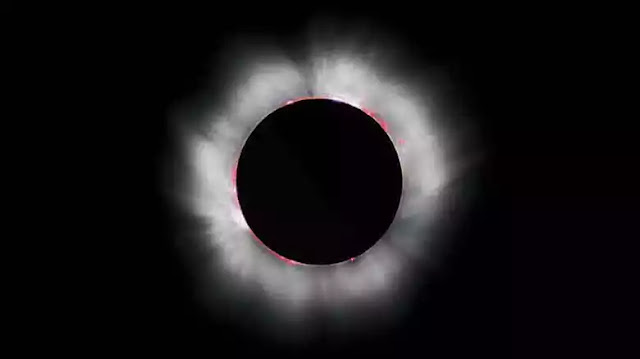Nigeria To experience Solar Eclipse August 21
Solar Eclipse
• Sun sending cancer-causing eruptions towards Earth
• System survey casts doubt on mysterious ‘Planet Nine’
• Rising seas could result in 2bn climate change refugees by 2100
A solar eclipse (Annular) occurred last February 26, 2017 the next solar eclipse (Total) would be on Monday, August 21, 2017. A solar eclipse occurs when the Moon passes between Earth and the Sun, thereby totally or partly obscuring the image of the Sun for a viewer on Earth. A total solar eclipse occurs when the Moon’s apparent diameter is larger than the Sun’s, blocking all direct sunlight, turning day into darkness. Totality occurs in a narrow path across Earth’s surface, with the partial solar eclipse visible over a surrounding region thousands of kilometers wide.
According to Space.com, this eclipse is the 22nd of the 77 members of Saros series 145, the one that also produced the solar eclipse of August 11, 1999. Members of this series are increasing in duration. The longest eclipse in this series will occur on June 25, 2522 and last for seven minutes and 12 seconds.
The eclipse will have a magnitude of 1.0306 and will be visible from a narrow corridor through the United States. The longest duration of totality will be two minutes 41.6 seconds. It will be the first total solar eclipse visible from the southeastern United States since the solar eclipse of March 7, 1970.
A partial solar eclipse will be seen from the much broader path of the Moon’s penumbra, including all of North America, northern South America, Western Europe, and Africa.
Experts caution that the only safe time to look at the sun without special eclipse glasses is during totality when the surface of the sun is completely blocked by the moon.
Also, long-term power cuts, destruction of electronic devices and increased cancer risks are worrying consequences of the Earth being hit by powerful solar eruptions. New research suggests these coronal mass ejections (CMEs) are on a collision course with Earth and are much harder to predict than previously thought.The huge ‘sneezes’ of solar plasma can reach our planet in one to three days and could have a devastating effect on life, as we know it.
Two main types of explosions occur on the sun: solar flares and coronal mass ejections, or CMEs.A direct hit could have catastrophic consequences and CMEs are even capable of potentially exposing aeroplane passengers to cancer-causing radiation.
Although they occur frequently, working out which ones will be strong and how badly they will impact Earth is difficult.“Up until now, it has been assumed CMEs move like bubbles through space, and respond to forces as single objects”, said Dr. Mathew Owens.“We have found they are more like an expanding dust cloud or sneeze, made up of individual plasma parcels all doing their own thing”, he said.
The study, which is published in Nature Scientific Reports, looks in detail at how CMEs make their way through space and how they interact with external forces like solar winds.
Also, an analysis of four icy bodies discovered in the outer Solar System reveals no sign that a large, unseen planet lurking beyond Neptune is influencing them. The finding chips away at a line of evidence for a ‘Planet Nine’ proposed in 2014 on the basis of the clustering of objects in a region called the Kuiper belt, argues a team of astronomers in a paper first posted on the arXiv preprint server on June 16.
Researchers leading the Outer Solar System Origins Survey (OSSOS), which is studying the region of space beyond Neptune, found the objects. The bodies that piqued the astronomers’ interest dwell in the outer reaches of the Kuiper belt.
Using the 3.6-metre Canada-France-Hawaii telescope on Mauna Kea, Hawaii, the team found four bodies that orbit the Sun in enormous ellipses at least 250 astronomical units (au) wide. An au is equivalent to the distance between Earth and the Sun; Neptune orbits at around 30 au. About 12 large-orbit bodies have been spotted so far,




Comments
Post a Comment